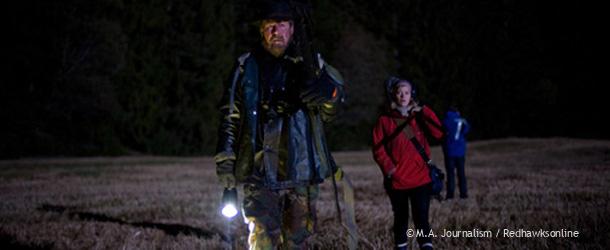A new breed of filmmaking
Ever since the turn of the century the horror genre has taken a significant plunge in quality. For some reason, Hollywood deemed it necessary to take every classic horror movie – A Nightmare on Elm Street, Friday the 13th, Halloween, etc. – and completely retell stories we already knew instead of creating new material for the audience. Any originality was replaced by cheap jump-scares and enough fake blood to make even Wes Craven uncomfortable. “The more blood, the better” could’ve been a marketing slogan for basically any scary popcorn-flick.
It was through this dark age of horror – which was beginning to stunt any hope and excitement that once made horror fanboys froth at the mouth – that started a re-visit to a once cheap filmmaking technique from the late 20th century, a genre that has slowly grown from indie-status to mainstream popularity: found footage films.
This sub-genre of horror is often presented to the audience as footage previously filmed by either an average person with a camcorder or a professional organization, more often than not claiming to be real in order to add a deeper sense of realism.
The thought of found footage films often cause one of three reactions: eye rolling, motion sickness, or glazed eyes mixed with confusion. The motion sickness would come into play because most found footage films feature a filmmaking technique that makes the viewer seem like they are watching a previously-recorded tape of someone’s shoddy camcorder. The results are a lot of shaky images, a lot of confusion, and a lot of awkward sound distortions.
Almost everybody has had an experience with a found footage film. For most it was The Blair Witch Project, a film about a group of students that film their wild goose chase for any evidence of an infamous local legend haunting the forest. Because of this, many people have come to the conclusion that this was the first found footage film ever made. And while it was the first to appeal to a mainstream audience, the genre dates back to the early eighties with an Italian film called Cannibal Holocaust, which, depending on whom you ask, is either a masterpiece and step forward in producing a whole new genre, or over-the-top and messy.
One of the reasons many earlier films that used the found footage technique were not as popular was because they were either critically panned, too controversial, or weren’t released by large studio companies. Many films have followed in Cannibal Holocaust‘s footsteps and have achieved a sort of cult status amongst horror culture due to their explicit content. Movies like The August Underground trilogy have even joined the ranks as being films that are held up mostly by their gore and not at all by any sense of story progression. Despite this, there are still movies being made in the genre that are being created for those that would rather not enjoy their cinematic experience with a barf bag and a bottle of brain bleach.
In 2007, a then-independent film called Paranormal Activity was released under Paramount Pictures and saw the beginning of a genre that had been buried underground since The Blair Witch Project. Unfortunately, the reason for this spike was not because of the quality film it was, but because of the quantity of cash it brought in compared to how much it took to make it. The popularity of this quick-cash product has spawned two sequels, with a fourth rumored to be released before the end of the year.
Now we’re stuck with the problem of whether or not any found footage films are worth the time and money. A lot of the times the films seem to be made to either be significantly gory or made only to make money with little or no effort put into the production. Fortunately, like all film genres, there are some films that are able to redeem the uglier faces of these movies. Well known films like REC, a Spanish film that was remade for audiences in the US in the form of the film Quarantine, Troll Hunter, a sci-fi black comedy that features a group of students originally investigating a chain of bear killings and finding something much more mysterious, and Cloverfield, a monster movie set in New York City. There are also a large number of independent films that are much better then the recent commercial sellouts. Movies like Man Bites Dog, Grave Encounters, and Lake Mungo are prime examples of how found footage films – with not as much attention to the explicit content and more time put into the cinematography, story, and characters – should be done.
Recent takes on the genre include movies like Chronicle and Project X, along with the TV show The River. Whether or not found footage films are for you depend primarily on your tolerance for gore, the strength of your stomach, and whether or not your mind is open to this new type of movie making.

